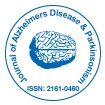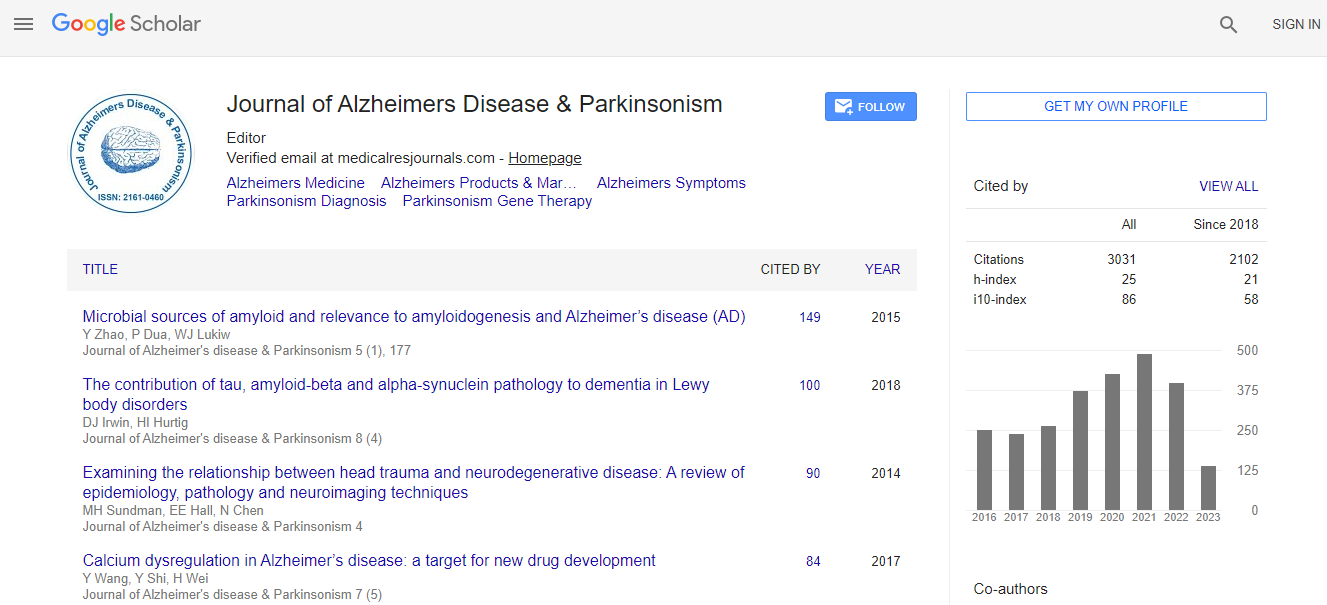Our Group organises 3000+ Global Events every year across USA, Europe & Asia with support from 1000 more scientific Societies and Publishes 700+ 91³Ô¹Ï Journals which contains over 50000 eminent personalities, reputed scientists as editorial board members.
91³Ô¹Ï Journals gaining more Readers and Citations
700 Journals and 15,000,000 Readers Each Journal is getting 25,000+ Readers
Citations : 4334
Indexed In
- Index Copernicus
- Google Scholar
- Sherpa Romeo
- Open J Gate
- Genamics JournalSeek
- Academic Keys
- JournalTOCs
- China National Knowledge Infrastructure (CNKI)
- Electronic Journals Library
- RefSeek
- Hamdard University
- EBSCO A-Z
- OCLC- WorldCat
- SWB online catalog
- Virtual Library of Biology (vifabio)
- Publons
- Geneva Foundation for Medical Education and Research
- Euro Pub
- ICMJE
Useful Links
Recommended Journals
Related Subjects
Share This Page
Accelerated brain aging with relevance to type 3 diabetes and alzheimer′s disease
10th World Congress on Alzheimer's Disease & Dementia
Ian James Martins
Edith Cowan University, Australia
Posters & Accepted Abstracts: J Alzheimers Dis Parkinsonism
DOI:
Abstract
The main constituent of plaques in the brain of Alzheimerâ��s Disease (AD) individuals namely Amyloid beta (A�²) is a proteolytic product of a larger protein the Amyloid Precursor Protein (APP) protein. Carriers of the apo E4 allele are at greater risk of developing AD with increased deposition of amyloid-beta plaques in western countries. Protein and A�² homeostasis is now crucial to the lifespan of organisms and is an important feature that determines the aging process in obesity, diabetes and neurodegenerative diseases. The scientific understanding of the maintenance of peripheral blood plasma A�² and caffeine metabolism has now become essential to prevent neurodegeneration that is linked to type-3 diabetes. The concentration of A�² within the brain is determined by hepatic A�² clearance and interest in the liver has increased markedly since in western countries the incidence of Non-Alcoholic Fatty Liver Disease (NAFLD) and insulin resistance has reached approx. 20% of the developed world. Induction of type-3 diabetes is related to delayed hepatic caffeine metabolism (NAFLD) with circadian dysynchrony (type-3 diabetes) connected to defective peripheral hepatic caffeine and A�² metabolism. Healthy diets stabilize type-3 diabetes and maintain the circadian rhythm with relevance to brain insulin resistance and alzheimerâ��s disease.Biography
Ian James Martins is an Editor and Reveiwer for Open Acess Pub/MDPI journals. He has appointed as the Chief Editor for International Journal of Diabetes Research (2014-2018); Research and Reviews: Neuroscience (2016-2018) and Journal of Diabetes and Clinical Studies (2017-2018); Scientist for Science Advisory Board (USA) and Academic with Academia.edu. He also has Lifetime Membership by International Agency for Standards and Ratings as Fellow; Winner of World Academic Championship-2017 in Diabetes and Medical Science (Nutrition).
Email:i.martins@ecu.edu.au

